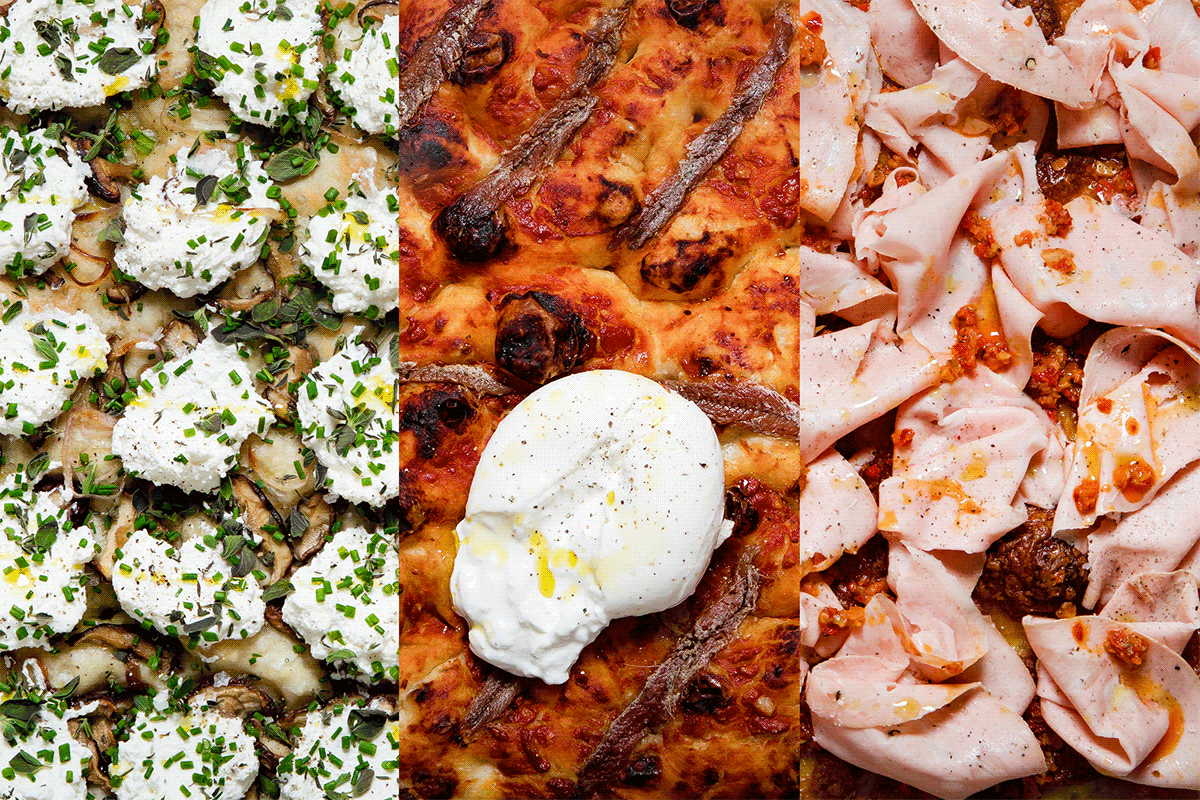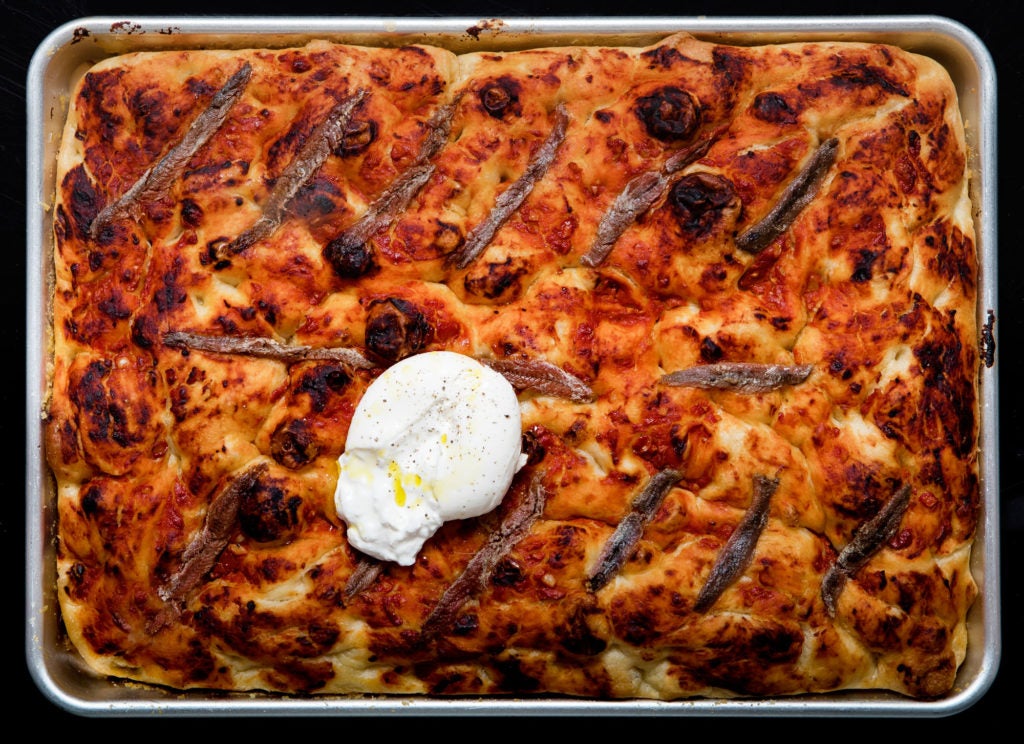
Pile it high with crispy mushrooms, briny anchovies, and creamy, salty cheeses.
For centuries, focaccia has had a quiet, rustic appeal, always outshined by its trendy, cosmopolitan cousin: pizza. But what it lacks in flair, it more than makes up for with its airy, perfumed interior and golden, oil-crisped crust. A fresh focaccia might be understated, but it’s extremely satisfying, both to eat and to make. The highly active yeast culture and a healthy glug of olive oil make for a vivacious, bubbly dough that feels like silk beneath your fingers, and it bakes into an impressively leavened bread with an admirable ratio of crumb to crust.
Perhaps that’s why so many chefs and home cooks have answered the focaccia call in recent years. In 2017, when Felix Trattoria opened in Los Angeles, chef Evan Funke started serving a rosemary-topped focaccia that developed a cult following of its own, even if they technically refer to it as sfincione (a focaccia-adjacent bread from Sicily). In New York, Il Buco Alimentari & Vineria took a new approach with its focaccia, piling its high after it’s been baked with ingredients like roasted squash, sautéed greens, cured anchovies, and sliced mortadella. Brooks Headley, of New York restaurant Superiority Burger, recently made perfecting Roman-style focaccia his newest passion project.
Focaccia may have reached its cultural peak, though, in October 2018, when Samin Nosrat’s four-part series Salt, Fat, Acid, Heat debuted on Netflix. Viewers went nuts for the focaccia she learned to make in the first episode—a refined Ligurian-style loaf with no toppings but for a sheen of salamoia, the blend of oil, salt, and water that evaporates as the bread bakes, leaving a crisp layer of salt behind on the surface. The baker in the episode presses his fingers into the dough, creating dimples for the salamoia to collect in, and little buried bubbles spring to the surface. It’s mesmerizing.
The two-stage approach opens up a diverse world of topping possibilities.
This straightforward approach results in a subtle and lightly seasoned flatbread that you could happily eat on its own. But for me, even a dependably great base focaccia recipe (like the one below) is an airy, neutral vehicle for toppings—an opportunity for savory, spicy, salty, and aromatic elements to playfully collide in your mouth.
In Italy, focaccia takes many different shapes in different regions. It can be smeared with tomato sauce, or studded with olives, or peppered with rosemary, or entirely eclipsed by a layer of cheese and charcuterie. It can be circular or square, and it can be made with butter or olive oil or lard. Its airy interior and topping-to-crust ratio usually distinguish focaccia from pizza, that other world-dominating Italian flatbread, but in some places, the fine line between the two becomes nearly invisible.

At Pizzarium Bonci, one of my favorite pizza destinations in Rome, dozens of bubbly, rectangular pizzas line the counter, all piled high with toppings like roasted summer squash, fresh ricotta, and thinly sliced house-made porchetta. The dough is distinctly pizza dough—chewy and with large, sparse air bubbles, as opposed to the very bubbly, more evenly-crumbed focaccia—but the topping philosophy is perfectly adaptable for focaccia. Some ingredients are baked directly onto the crust and others are added after the fact, once the pizza has cooled.
The two-stage approach opens up a diverse world of topping possibilities when you don’t have to be concerned about an ingredient having the life scorched out of it in a 450-degree oven. Since focaccia is most commonly served at room temperature, ingredients like ricotta or stracciatella (the gooey, creamy cheese on the inside of burrata), fresh basil and oregano, and marbled, fennel-flecked finocchiona aren’t in danger of dehydrating, wilting, or sweating.
The best focaccias I’ve made tend to center around this two-step topping idea. Anything that might benefit from the heat of the oven goes on top of the focaccia dough after it’s dimpled, and the remainder of the toppings come along once it’s cooled a bit. The result is not just a contrast of flavors, but of textures and temperatures. It allows for umami-packed anchovies and cooked tomatoes to mingle with cool, creamy burrata. Roasted mushrooms and caramelized shallots can meet fresh, green herbs and a dollop of ricotta. A field of melted provolone cheese sits under ribbons of shaved mortadella, which becomes shimmery with fat as it melts atop the hot crust and collides with a spicy, vinegary mix of minced chiles, artichokes, olives, and garlic.
The base for all of these recipes is a multipurpose, no-knead focaccia dough that even the most timid home bakers can get behind. The base dough makes a great toppingless focaccia, too (just brush with olive oil and sprinkle with flaky sea salt before baking and call it a day), but I encourage you to follow the more-is-more layering philosophy. The higher you can pile them, the better.